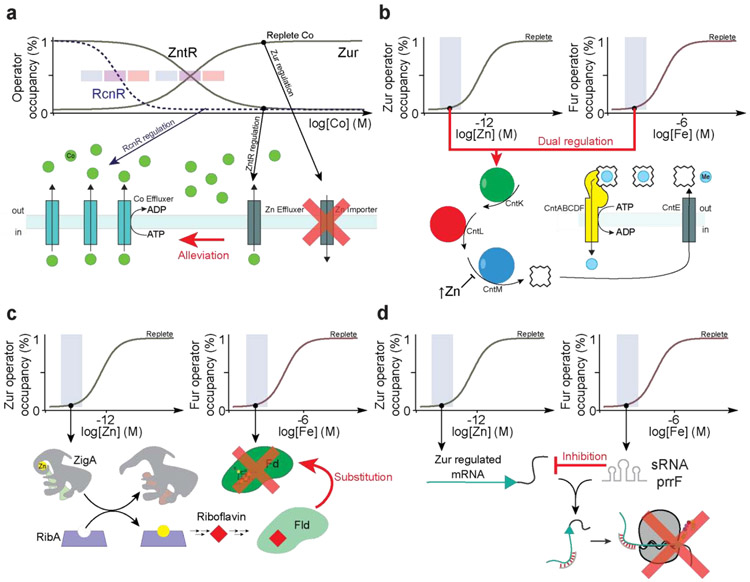Figure 4.
Metallostasis crosstalk. (a) In S. enterica serovar Typhimurium, RcnR senses Co(II) toxicity and derepresses Co(II) effluxers (cyan). Under conditions of Co(II) toxicity, Zn(II) responsive regulators ZntR and Zur also sense non-cognate Co(II) to allow for the expression of Zn(II) effluxers (gray) that are capable of effluxing non-cognate Co(II) [11]. (b) The metallophore staphylopine is produced for transition metal uptake under conditions of low Zn(II) or low Fe via Zur and Fur dual regulation [58]. Once metallostasis is restored, staphylopine dehydrogenase (CntM) is inhibited by high levels of Zn(II) to avoid toxicity [59]. (c) Fe starvation is expected to result in the loss of cellular reducing equivalents provided by ferredoxin (Fd) [62]. Flavodoxins (Fld) can functionally replace the inactivated Fds in a Fur-dependent manner, as there are Fur regulated Fld-encoding genes in B. subtilis and C. acetobutylicum [61,66]. When A. baumannii suffers Zn(II) restriction by CP, a high cellular concentration of a candidate Zn(II) metallochaperone ZigA sustains riboflavin biosynthesis, proposed to occur via metalation of the Zn(II)-dependent GTP cyclohydrolase II RibA, such that Zn(II) depletion effectively rescues a response to Fe restriction [18**]. (d) Zn(II) starvation results in the transcription of the Zur regulon. Fe starvation leads to the transcription of Fur-regulated PrrF sRNA in P. aeruginosa, which in turn inhibits the translation of some proteins encoded by the Zur regulon [51**].

